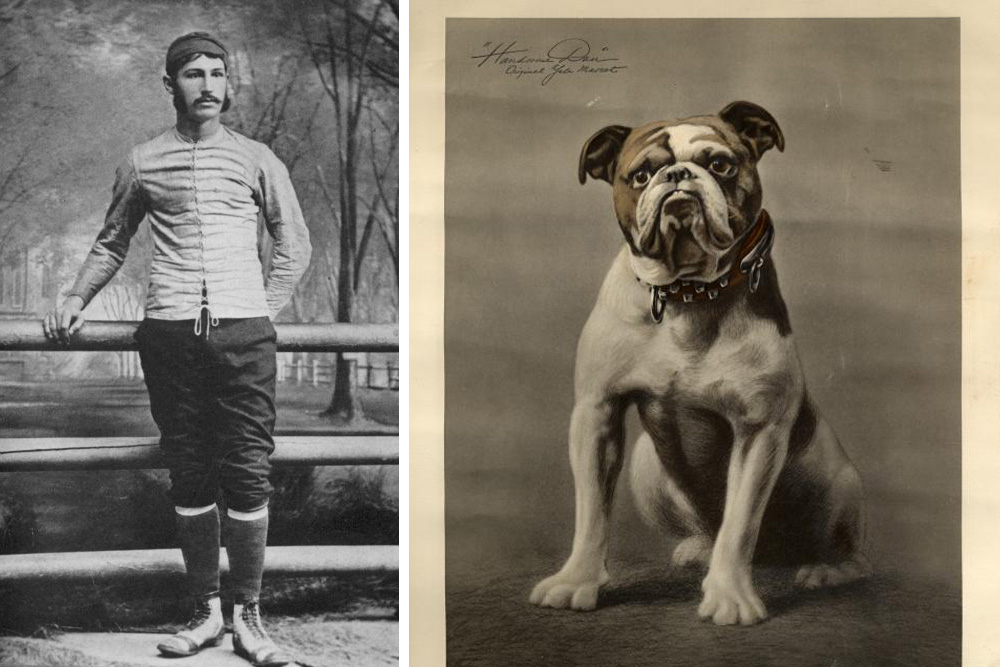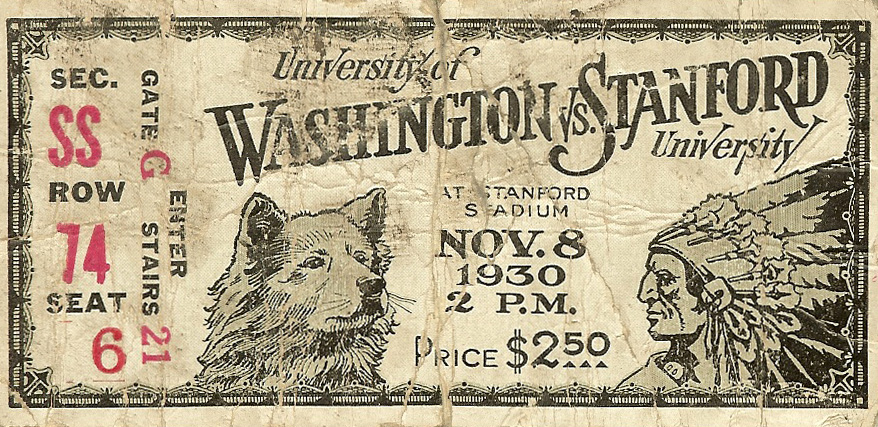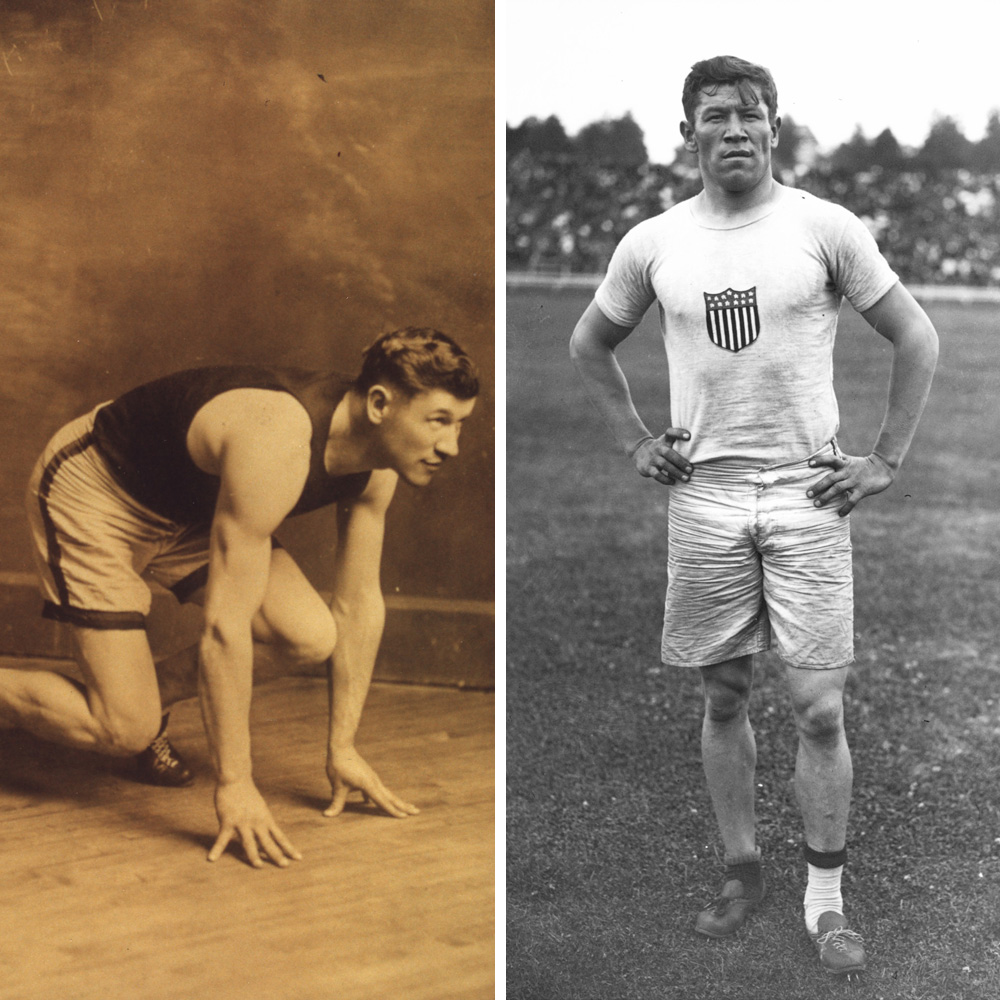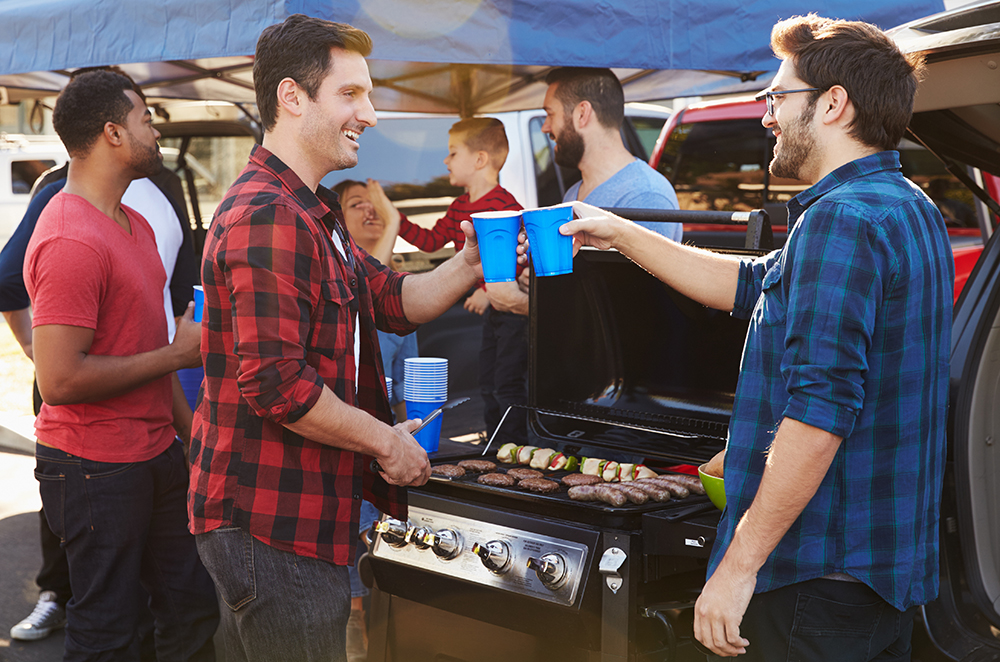An American Tradition
The History of Football
Though football-like games have been traced back as far as 750 BC, American football as we know it made its modest start as a collegiate game, played by young men as a break from academics at Ivy League universities. The game resembled those played across Europe for centuries, but because they lacked firm rules it was many years before universities and the public accepted the sport we know and love.
 Harvard vs. Yale football game, 1905.
Harvard vs. Yale football game, 1905.
Collegiate Football Starts a Trend
The beloved game would likely not have grown in popularity were it not for the college athletes who continued to play, despite being reprimanded by their administrations. These players created the building blocks for the sport. In the mid-1800s, athletes at Yale and Harvard revolutionized football by setting a specific number of players—eleven per team—to be on the field at one time, establishing a line of scrimmage, and snapping the ball from the center to the quarterback.
 Left - Walter Camp, known as the "Father of American Football," was a player and coach of American football in addition to being a sportswriter. He earned an induction into the College Football Hall of Fame after coaching the Yale Bulldogs to three national championships in the late 1800s. Right - Handsome Dan, the Yale Bulldogs' original mascot.
Left - Walter Camp, known as the "Father of American Football," was a player and coach of American football in addition to being a sportswriter. He earned an induction into the College Football Hall of Fame after coaching the Yale Bulldogs to three national championships in the late 1800s. Right - Handsome Dan, the Yale Bulldogs' original mascot.
Thanks in part to one star player in particular, Walter Camp (who has long been considered the “Father of American Football”), the game finally had a concise set of widely accepted regulations and was starting to more closely resemble the modern game of football. As the nineteenth century went on, more colleges began to adopt the sport and conferences began to develop—forming steep rivalries among teams.
 A University of Washington vs. Stanford University football game ticket stub, 1930. Image Credit: MissionInn.Jim (Own Work) [CC BY-SA 3.0], via Wikimedia Commons.
A University of Washington vs. Stanford University football game ticket stub, 1930. Image Credit: MissionInn.Jim (Own Work) [CC BY-SA 3.0], via Wikimedia Commons.
Infamous battles, such as the ones between Stanford and California, were created during these years, helping to bring football into the American consciousness. By the early 1900s, fierce competition in the sport among regions of the US made the necessity for a professional league apparent. In 1919, meetings for the first professional association began.
The Professional Era Begins
In 1920, the American Professional Football Association (APFA) was started following a meeting in Canton, Ohio. Former collegiate star athlete Jim Thorpe was named president of the league, and, in all, fourteen teams joined including the Akron Pros, the Buffalo All-Americans, the Canton Bulldogs, and the Decatur Staleys (which were the only teams to play through to the end of the scheduled season).
 During its inaugural season, the American Professional Football Association (APFA) awarded the Akron Pros with a championship title based on their top season performance of 8–0–3 (8 wins, 0 losses, and 3 ties).
During its inaugural season, the American Professional Football Association (APFA) awarded the Akron Pros with a championship title based on their top season performance of 8–0–3 (8 wins, 0 losses, and 3 ties).
After only one year as an organized association, eleven new teams had joined bringing the total to twenty-five. In these formative years, the APFA experienced significant changes, as well as a handful of controversies. In 1922, the APFA changed its name to the National Football League (NFL), and, in 1925, suspected foul play during a playoff game helped spur an entirely new league, the American Football League (AFL).
 During his professional sports career that ended at age 41, Thorpe earned two All-American titles, three professional football championships, and two Olympic gold medals. The first president of the American Professional Football Association (APFA) was named the "greatest athlete" from the first 50 years of the twentieth century by the Associated Press.
During his professional sports career that ended at age 41, Thorpe earned two All-American titles, three professional football championships, and two Olympic gold medals. The first president of the American Professional Football Association (APFA) was named the "greatest athlete" from the first 50 years of the twentieth century by the Associated Press.
Football Becomes a Spectator Sport
It’s hard to argue the fact that, at least in America, football is paramount. The sport is played in every nook and cranny of the country by players of all ages, and there is virtually no one who is unfamiliar.
Though the rise was slow and steady, a relative explosion in popularity during the latter half of the twentieth century occurred after the 1958 NFL championship game between the Baltimore Colts and New York Giants. Nicknamed “the greatest game ever played,” it was the first game to be televised nationally, and it helped to make watching football an American tradition.
The widespread success of the 1958 game helped make televised games profitable, and through the 1960s and 1970s, multiple weekly programs were formed, including the beloved Monday Night Football, which debuted in 1970. For nearly fifty years, millions of Americans across the country have tuned in every Monday night to watch their favorite teams go head to head.
 The Los Angeles Memorial Coliseum was host to Super Bowls I and VII. The stadium is the first to have hosted the Summer Olympic Games twice and has been proposed to host again in 2024. Image Credit: Bobak Ha’Eri (Own Work) [CC BY 3.0], via Wikimedia Commons.
The Los Angeles Memorial Coliseum was host to Super Bowls I and VII. The stadium is the first to have hosted the Summer Olympic Games twice and has been proposed to host again in 2024. Image Credit: Bobak Ha’Eri (Own Work) [CC BY 3.0], via Wikimedia Commons.
It was also during these years that the first championship game between the AFL and NFL occurred. The Super Bowl, as it was later named, took place in 1967 between the Green Bay Packers and Kansas City Chiefs, with Green Bay winning 35–10. It was the only time the Super Bowl would be broadcast on two different major networks—NBC and CBS—and, at up to $12 a ticket (a steep price for the day), most Americans tuned in from home.
Nowadays, however, it’s not only on television that we gather to watch these games. According to ESPN, more than 31 million Americans attended football games during the 2016 season. The Dallas Cowboys had the highest attendance record for 2016, with an average of 92,539 attendees per home game.
The Rise of the Tailgate
Though traveling to see games had been a part of football since it began at the Ivy League level, it’s difficult to pinpoint exactly when tailgating at events first began. Needless to say, tailgating is just as much a part of the American football tradition as the football itself and has grown to become one an adored pastime of the fall season.
When we attend a game, we’ve come to expect the droves of fans who pack once empty parking lots with trucks, tents, and loud music—unloading tables and coolers full of snacks and drinks—and the food has become just as important as the type of drink you bring.

Today’s tailgates go much further than chips and dip. Instead, most attendees take into careful consideration the array of sandwiches, snacks, and desserts they prepare. There are even entire cookbooks dedicated solely to tailgating and game day recipes.
Now that you’ve delved into the history of American football, follow these tailgating tips and recipes to make the most of every big game this year




Posted in Article, Issue 85 Vol 1 on Jul 09, 2017